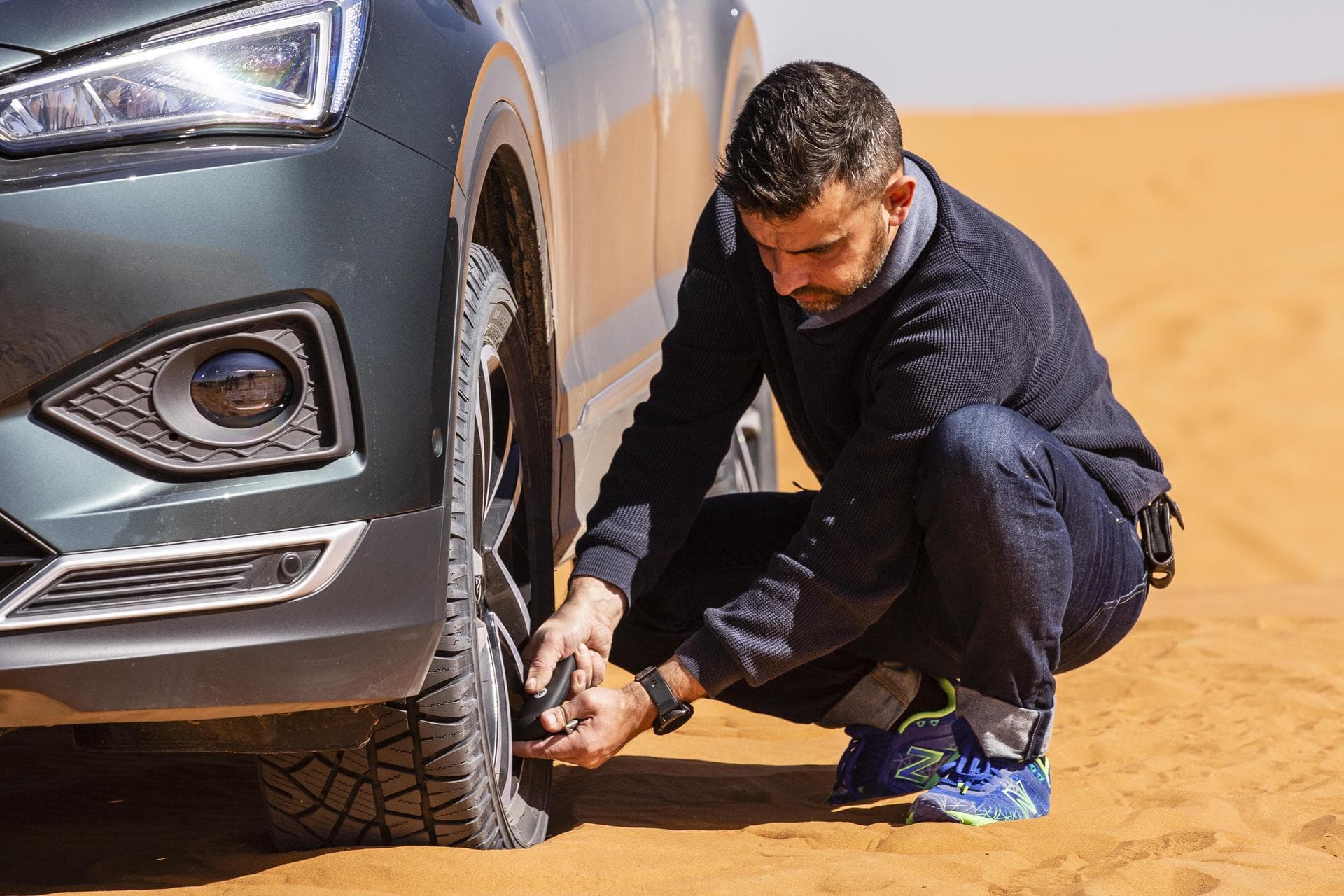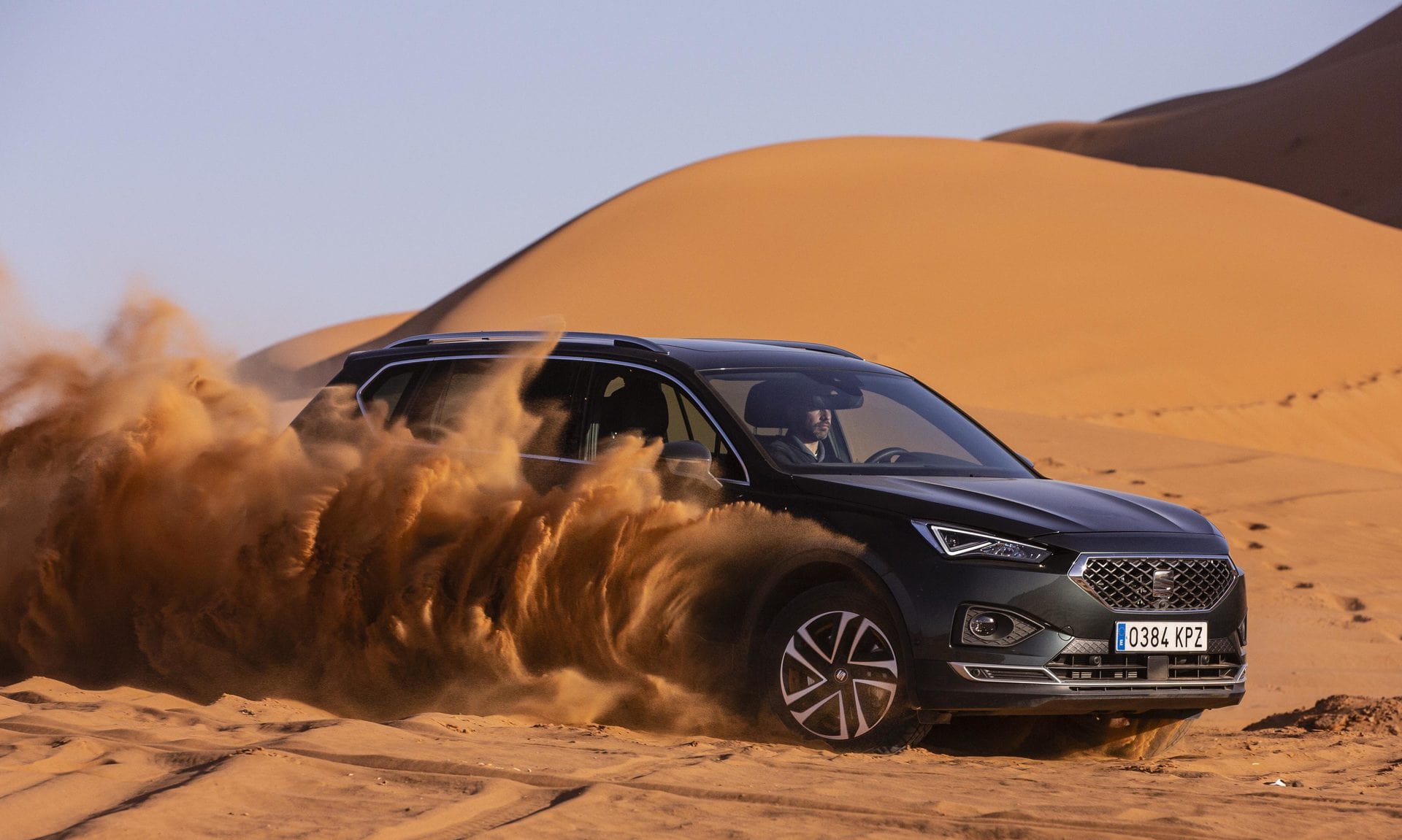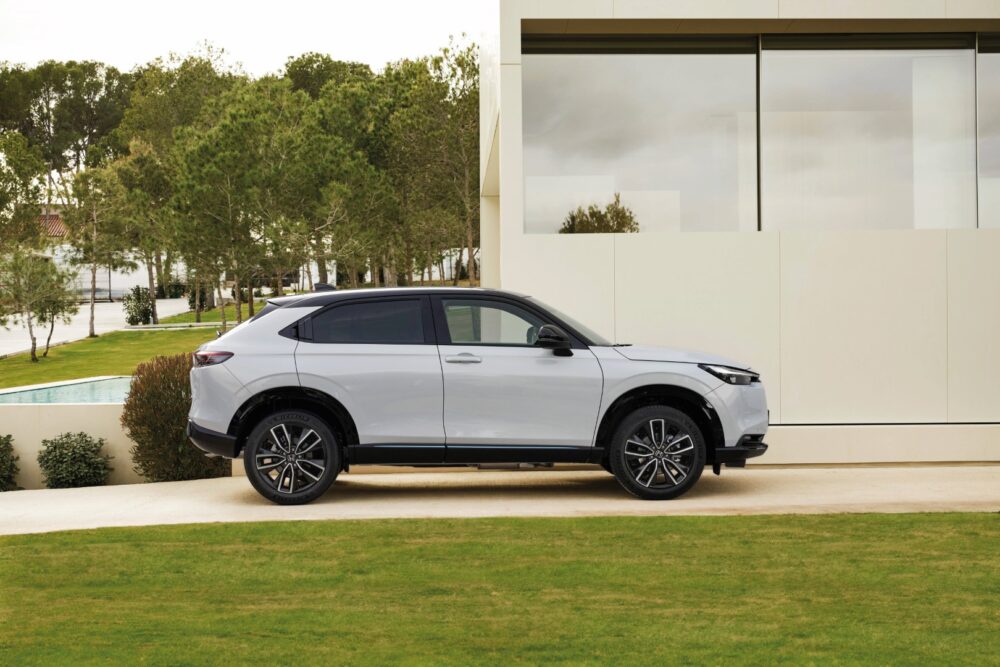Seat: How to pack sand and dunes 🎥
ALWAYS SLOW If you want to conquer the desert on your vacation in an off-roader, then you should follow the driving tips of Stefan Ilijevic, Head of Innovation Seat. He knows how to do it. Stefan Ilijevic, Head of Innovation Seat, explains how to make progress in fine sand without any problems. The task is significantly more difficult when you [...]
Stefan Ilijevic, Head of Innovation Seat, explains how to make progress in fine sand without any problems.
The task is much more difficult when you have exclusively soft sand under your wheels and the gradient is just under 60 degrees. For this you need not only a fully off-road capable vehicle, but also a certain driving know-how.
Stefan Ilijevic uses a Seat Tarraco to show how to conquer a 100-meter-high dune in Morocco's Merzouga desert. Here are the explanations to go with the video:

Less air creates more grip
If you want to drive on loose ground such as soft sand, a tire pressure reduced by about 1.5 bar provides more grip. The lower pressure reduces the tire's curvature and thus increases its contact area with the ground. In addition, the tire adapts better to unevenness and thus not only provides more traction, but also straight-line running.
Use driver assistance systems
The Seat Tarraco, like other vehicles in this class, is equipped with several driver assistance systems that make driving on a wide variety of surfaces much easier and, not least, safer. However, in extreme situations, such as when climbing a sand dune, it is necessary to deactivate the electronic stability program ESP. This prevents the wheels from locking, which provides more traction on loose surfaces.
Selecting the right driving mode
Four-wheel drive is important for this challenge. However, this is not enough to reach the destination safely under such extreme conditions. Among the six driving modes offered by the Tarraco, for example, the off-road mode is perfect for this task. It is the most versatile driving mode and ideal for driving on a wide variety of surfaces.

Select gears as low as possible
When starting up at the dune, you must ideally approach the dune at an angle in first or second gear. A medium speed level is so important because you need the maximum torque for the ascent. Under no circumstances should you brake when driving uphill. Otherwise there is a risk of getting stuck in the loose, soft sand.
Only when you have passed the apex of the dune can you brake. However, it is optimal to take a large part of the momentum and use it for the descent and subsequent ascent of the next dune.
Always drive as evenly as possible
To avoid getting stuck in the tire tracks of a vehicle in front, it is advisable to drive at as constant a speed as possible, between 20 and 30 km/h. A steady driving style is so important because if you accelerate too much, the vehicle will dig in, and when you brake, mountains of sand will form in front of the tires, making it difficult to move forward.









